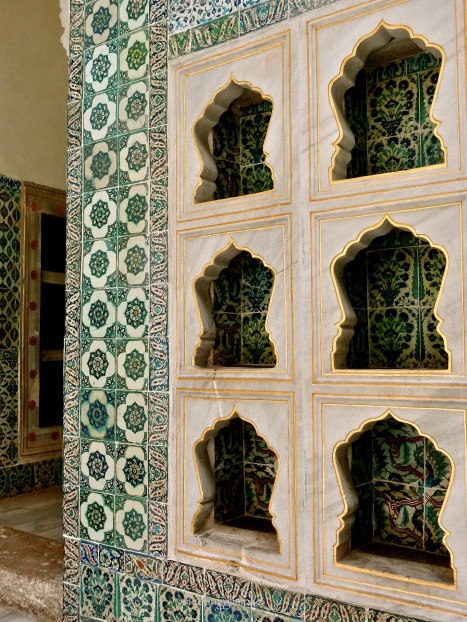The feeling that there is soooo much time to prep for a holiday in a slightly strange land. That there will be all the time in the world to read up interesting places, things to do and culture and crafts to check out. And too soon, a travel date is looking up your nose and you have to just go, with only a smattering of information!
Pretty much how it happened with a trip to Turkey. In a way, this is ideal, you are surprised, and enchanted. I had only heard about the fabulous Iznik pottery. That it is traditionally Turkish and comes in whites and blues. So the first introduction to this art at the Topkapi Palace was a breathtaking moment.
It is said that the Topkapi Palace, in Istanbul, is one of the few places today that contains a large sampling of the Iznik tiles. It is only post the holiday, after soaking in the real deal, that I have spent some time getting to know these a little better. The name Iznik comes from a town in Anatolia, where the pottery was first and largely made between the 15th and 17th century. Initial examples of this art all seem to be pots, jugs and plates, with tiles coming in only at a later stage. By the end of the 17th century, there was a decline in the craftsmanship and quality, which is said to have also started the decline of the manufacture of these beautiful ceramics.
A white ceramic paste was used to craft the pottery, it was then decorated with designs painted on, mainly in cobalt blue, and then a colourless glaze applied on top. It was only in the 16th century that other colours were introduced. Designs originally combined Ottoman and Chinese elements.
The Topkapi Palace contains almost no Iznik pottery today (they are in museums and private collections outside), but it still has the most amazing tile collection, right in its walls. Inside the palace, the Harem section probably contains the most beautiful tiles.
Orders for tiles placed by the Sultans for the palaces, mosques, and other monuments were designed by artists working in Iznik workshops and the installation executed by palace architects. Prized by the Sultans, exported for their brilliant craftsmanship to European countries, it is not surprising to see why.
You cannot get too close to the tiles in many places, but the patterns and colours are so brilliant, even to a slightly distant eye.
The Blue Mosque is another awe inspiring structure, that leaves you craning your neck the full time you are in there to take in the beauty of the tiles high above, on the walls and in the domes. It is a worshipping mosque, so visiting hours are restricted and you are required to take off footwear, use a head cover.
The quietness inside leaves all the time and space in the mind to take in the amazing talent and effort that has gone into making this mosque the most beautiful one in Istanbul.













